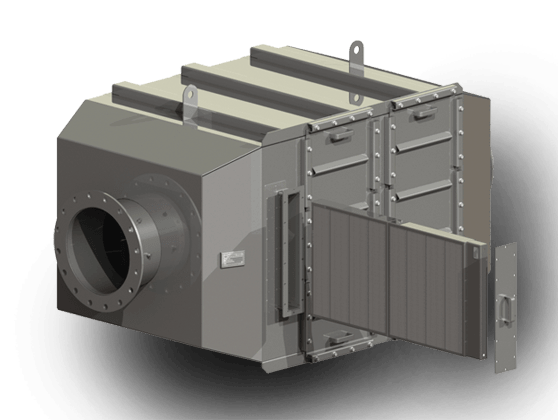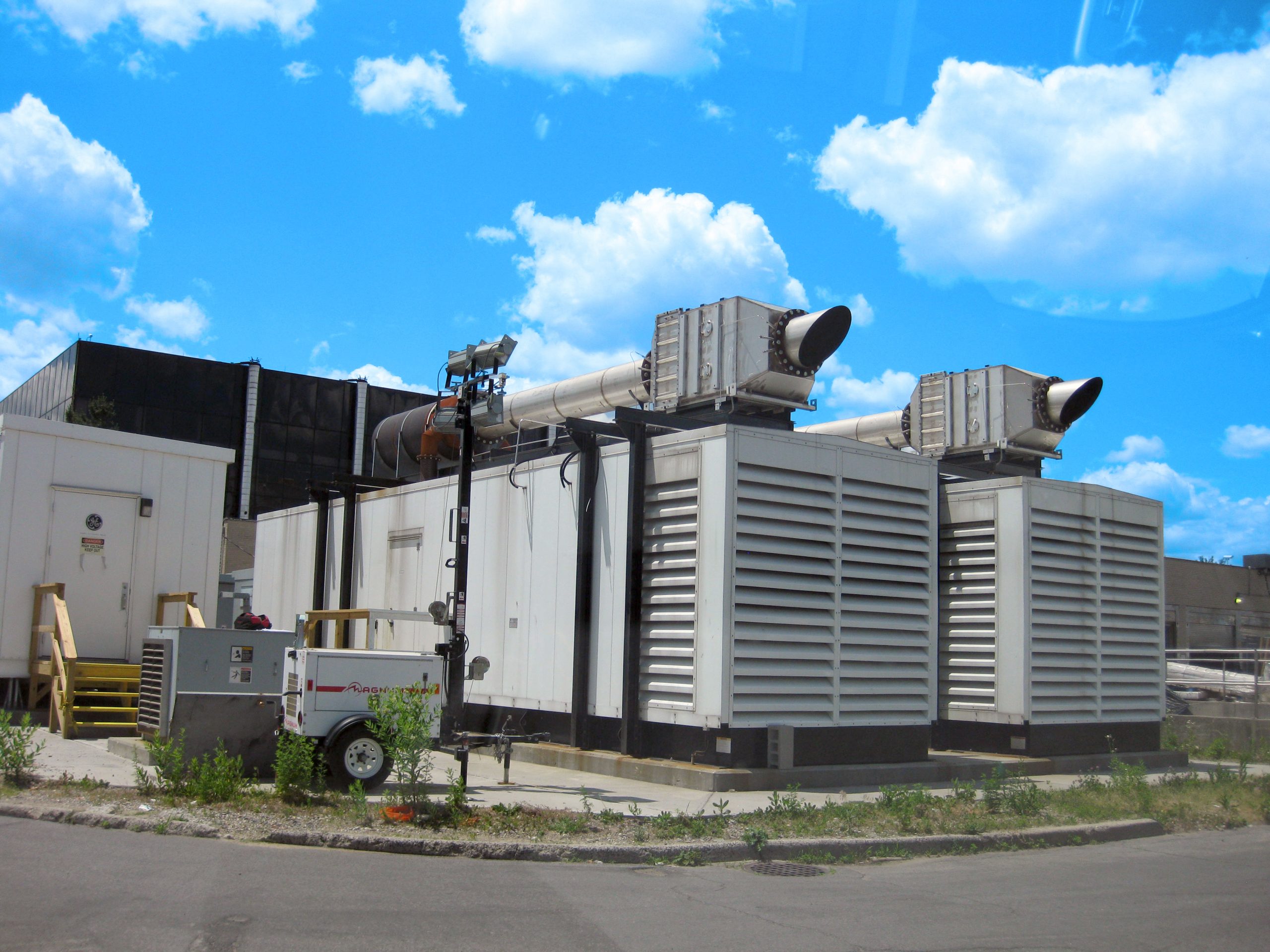

The LTR system is developed for maximum reduction of engine exhaust emissions from emergency backup and prime power generator units. The LTR’s Apex oxidation catalyst (DOC) is built into the front of the filter housing which treats the exhaust before it enters the diesel particulate filter (DPF). This system design addresses pollutants such as carbon monoxide (CO), unburned hydrocarbon (HC), volatile organic compounds (VOC), and particulate matter (PM).
Plus, it is designed to remove over 85% (and can achieve up to 97% removal) of particulate matter (PM or soot) from stationary diesel engine exhaust with regeneration temperature requirements as low as 500°F/260°C. The captured particulate matter is burned off passively through catalytic oxidation energized by the exhaust temperature. (No additional heat input to the exhaust gases is required.) Therefore, for most engines, soot regeneration can start at an engine load as low as 30% (at 500°F / 260°C) with properly insulated exhaust piping.
The DOC is made of proven Apex substrate and is coated with precious metals to promote specific oxidation reactions to convert:
• CO to CO2
• Unburned Hydrocarbons to CO2 and H2O (Water)
• Some NO will be converted to NO2, to support the regeneration process in the DPF module.
The DPF module is made of multiple DPF blocks consisting of porous Mullite substrate. It will capture the particulate matter with a filtration efficiency of 85% or better. Once the PM is captured, it can be catalytically oxidized with the support of NO2 for the oxidation process.
In addition, MIRATECH’s DPF Data Logger kit comes with all the proper components to monitor the temperature and back pressure at the inlet of the LTR housing. Each kit contains: (1) Controller, (1) Display, (1) Pressure Gauge Assembly, (1) Moisture Separator, (1) Fuse Kit and (1) Wiring Harness. This monitoring system provides warnings when the exhaust-gas back pressure in exhaust systems reaches excessively high levels, as can happen when a filter becomes clogged with diesel soot. If the monitoring system detects too high of a back pressure level, or severe damage to the filter, it first provides a visual alarm for the user by means of illuminated display lamps, and then generates an audible alarm.
The LTR system is designed to accommodate engines sized from 100 kW to 4 MW and can be fitted on Tier 1, 2, or 3 engines with certified PM emissions that are less than 0.3 g/bkW-hr.
It comes standard with a carbon steel housing with high temperature black paint and is also available in 304SS. Plus, the LTR system provides Critical grade noise reduction, eliminating the need for a separate silencer in most applications. In addition it is engineered for easy installation and service. Its compact profile allows for installation flexibility especially since it can replace a separate silencer.”
With proper engine control and maintenance practices, the LTR will provide years of trouble free emissions abatement.


- Applications
- Pollutants
- Power Generation
- Air Compression
- Liquids Pumping
- CO
- VOC (NMNEHC)
- HAP's
- Particulate Matter (PM)

